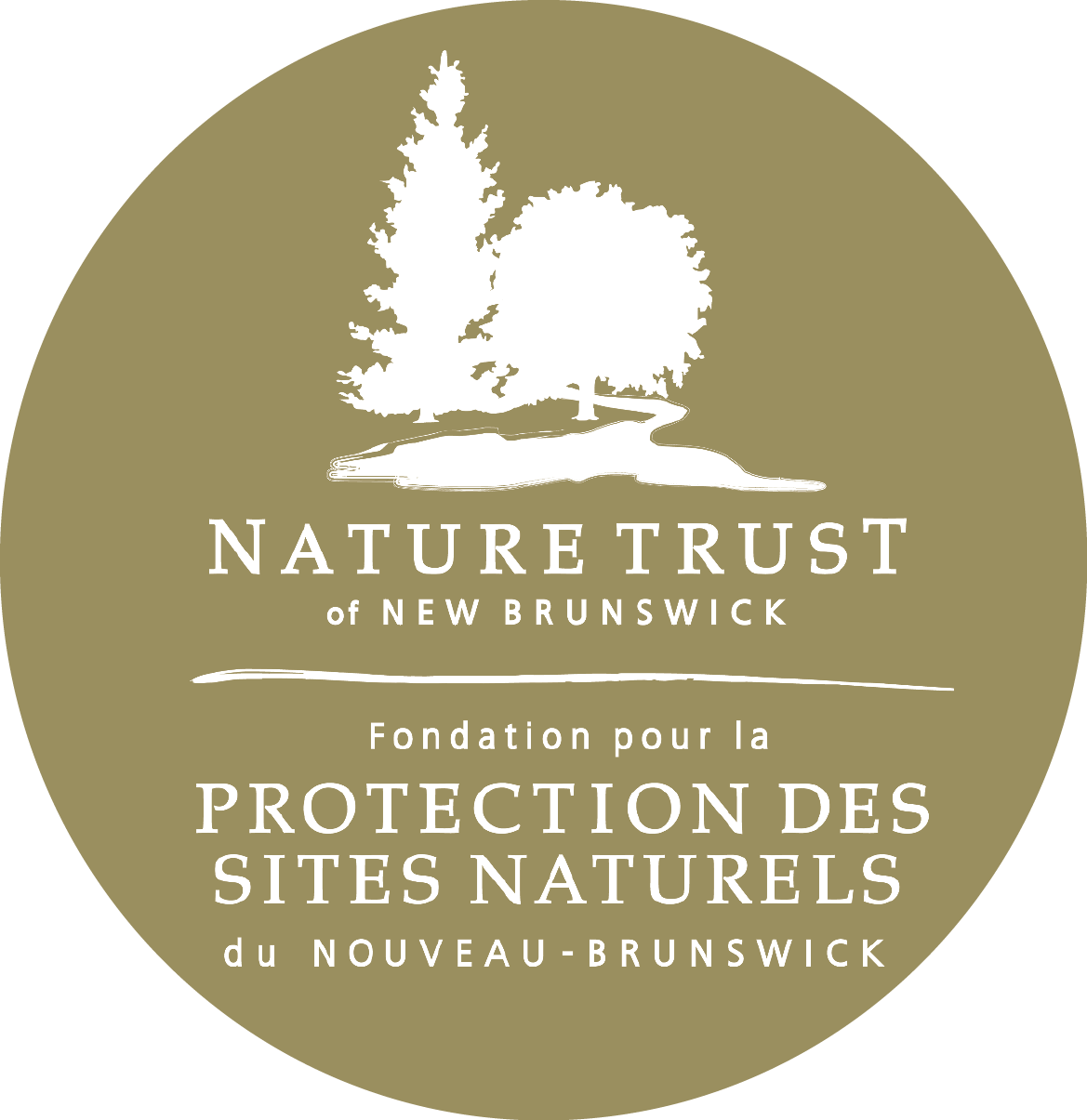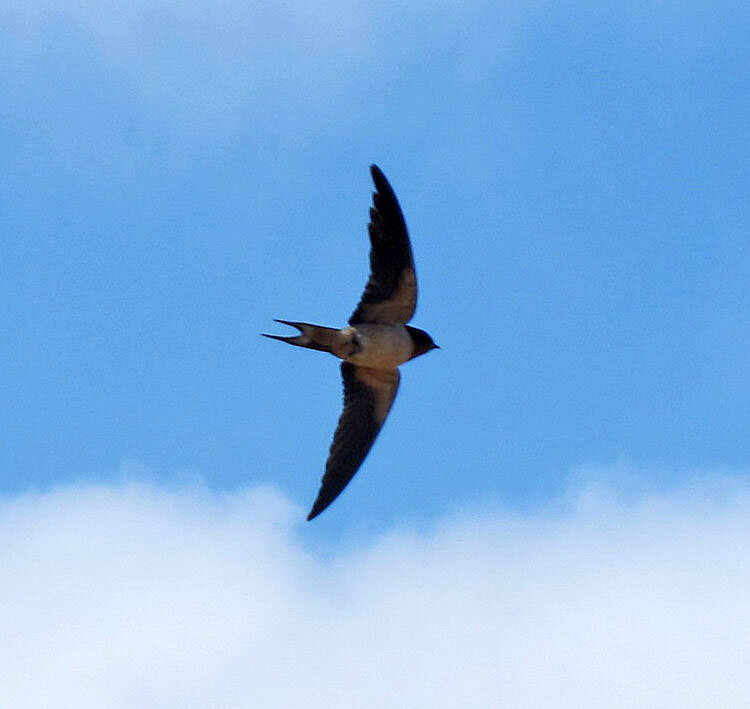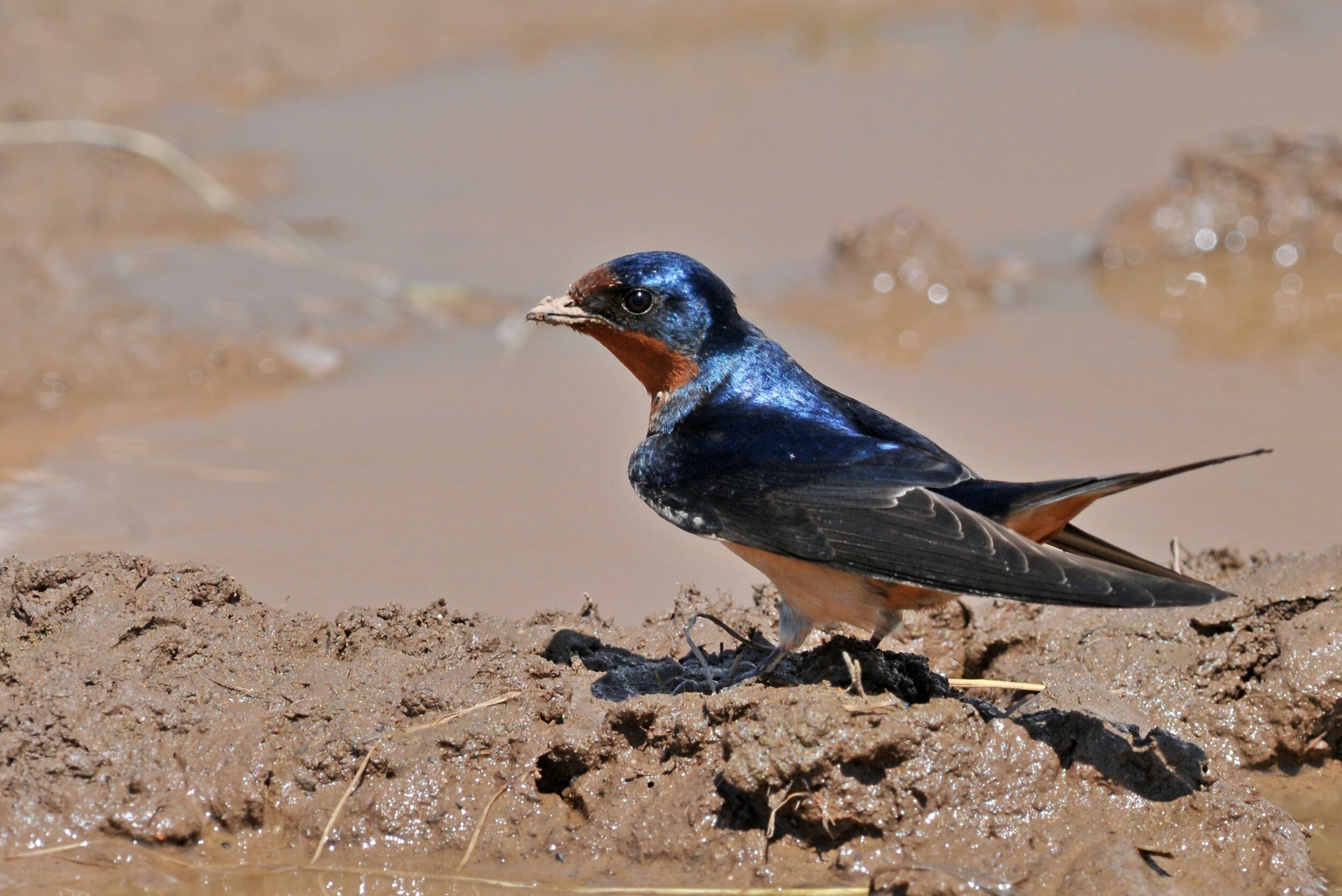(Hirundo rustica)
Status: Threatened (SARA); Special Concern (COSEWIC)
This means that without some form of action, they could disappear from Canada or the entire planet.
Identification guide:
Contrasting colours:
Blue-grey back, head and wings;
Cinnamon or rust-coloured forehead and throat;
Pale-rufous underside.
Deeply forked tail.
Constant twittering in barns when nesting.
Song at www.natureinstruct.org/dendroica
Habitat & Behaviour
The barn swallow (Hirundo rustica) was once a familiar sight in rural New Brunswick and is easily identified by its deeply forked tail and the striking colour of its forehead and throat (chestnut-cinnamon) against the dark blue–grey of its head, back and wings. It is an aerial insectivore (feeds on flying insects) and is known for its impressive acrobatic skills.
Barn swallows coexist well with humans, building mud cup-shaped nests in barns, under house eaves, on ledges or rafters and even on vertical walls, taking advantage of any nooks and corners. Pairs will often return to the same nest sites year after year; and a given site may host one to several nesting pairs.
Threats
It is likely that barn swallow populations initially increased with land clearing and the building of barns, and the creation of additional suitable nest sites following European settlement. However, its abundance has dropped significantly since the 1980’s, as has been the case for many other members of the aerial insectivores. The reasons for this decline are not fully understood, although concern around the availability of food (flying insects) is one area of research. Like all migratory birds, Barn Swallows, and their nests and eggs are protected.
Ways You Can Help
If barn swallows are nesting in a building on your property, avoid disturbing them and maintain access to the nest sites now and into the future, as individuals may return for many years.
Follow best management practices (BMP) regarding insecticides (Contact NB Dept. of Agriculture, Aquaculture & Fisheries).
New barns are often designed to exclude birds. Consider placing horizontal ledges to serve as nesting sites on the exterior, near the roof or some other protective overhang.
This project was undertaken with the financial support of Environment Canada.
Sources: Brown and Brown 1999 in The Birds of North America Online; COSEWIC 2011.
To find out more about Species at Risk conservation, contact our Conservation Manager, Carli Le Roux, below
or by calling (506) 457-2398.



